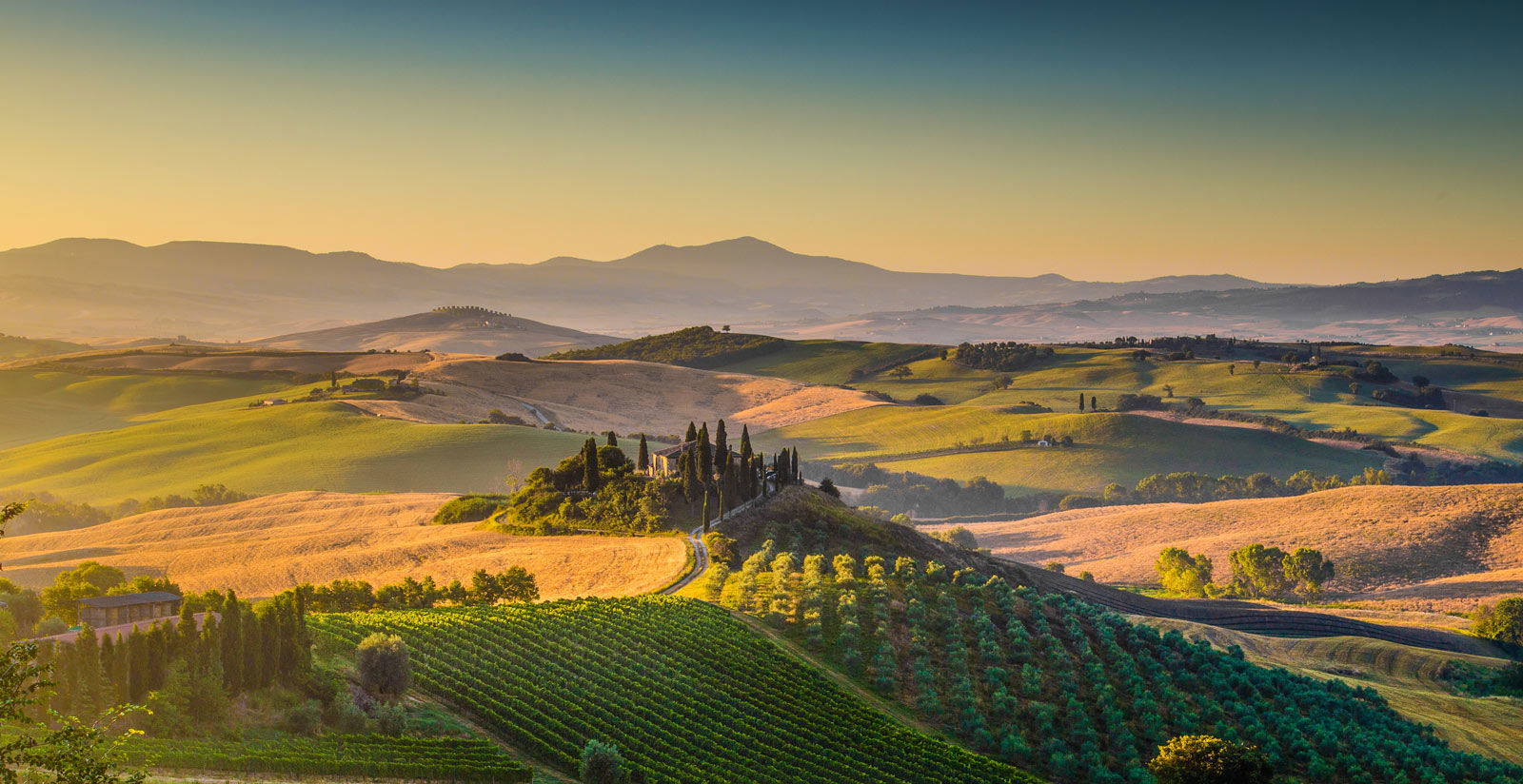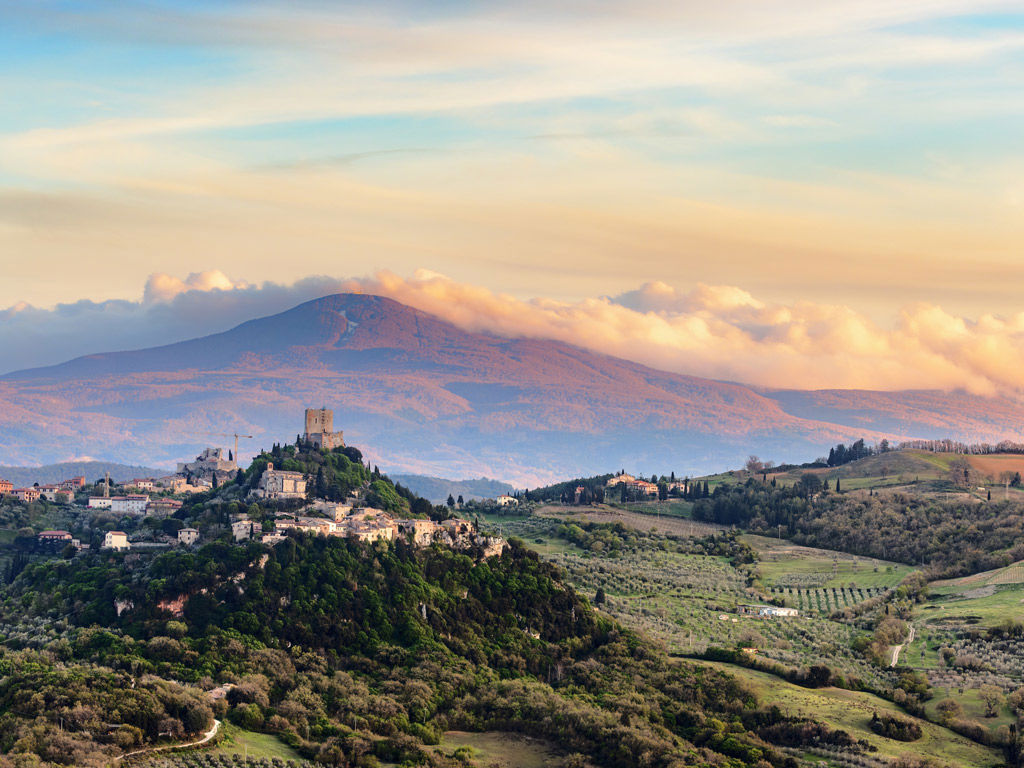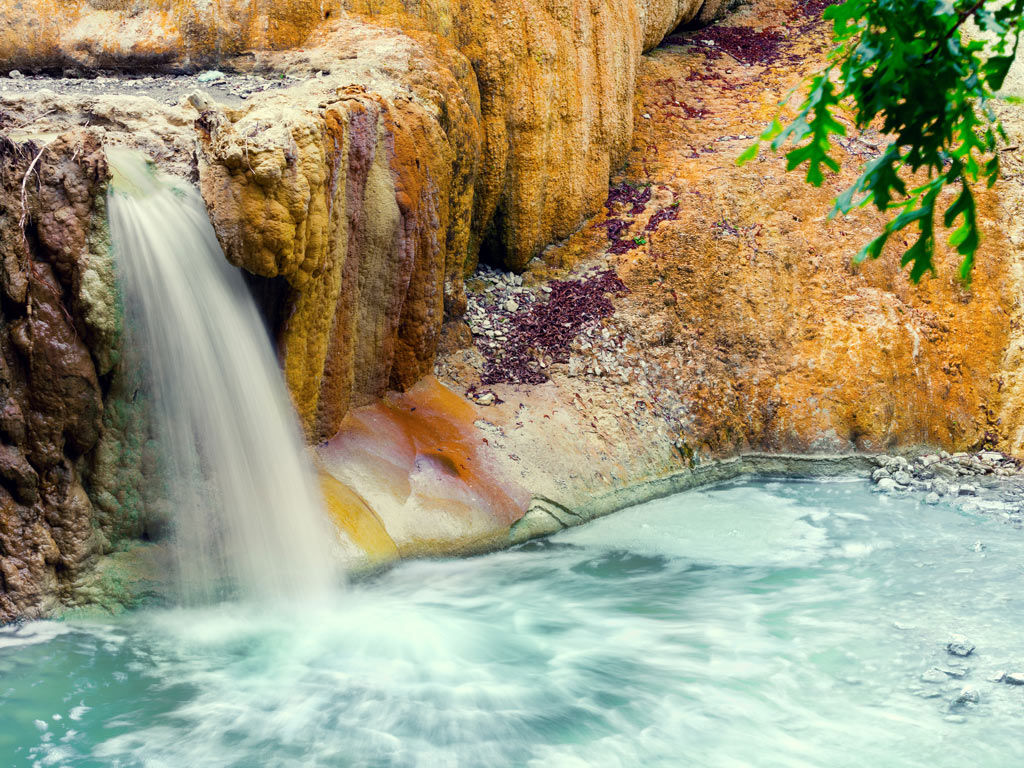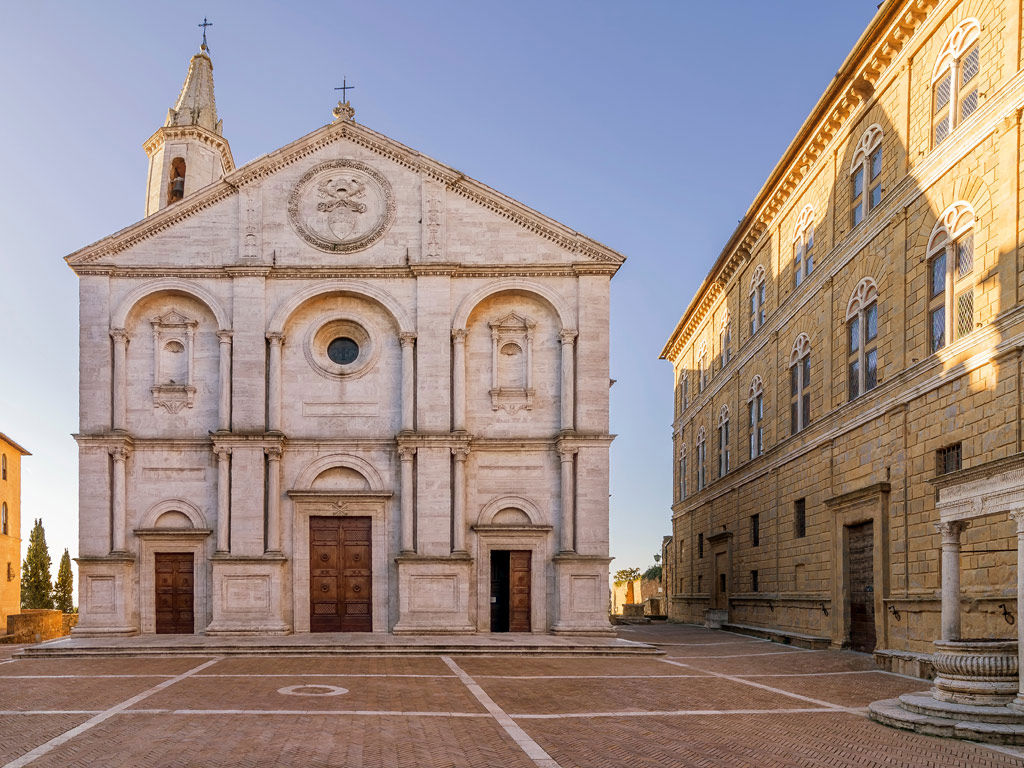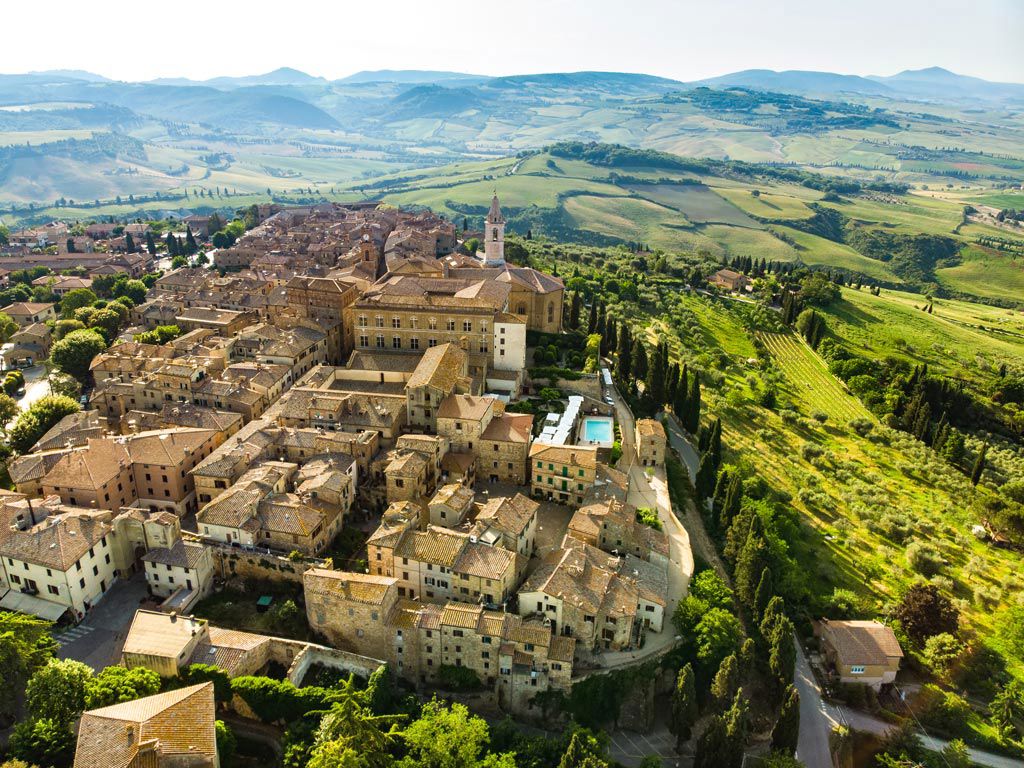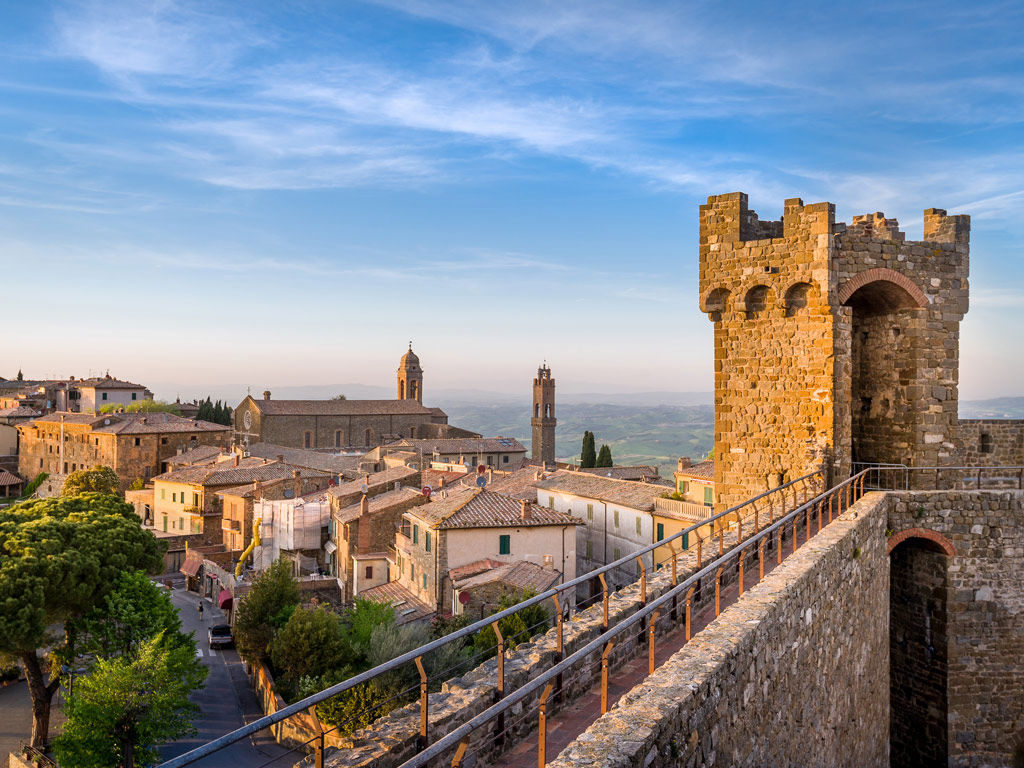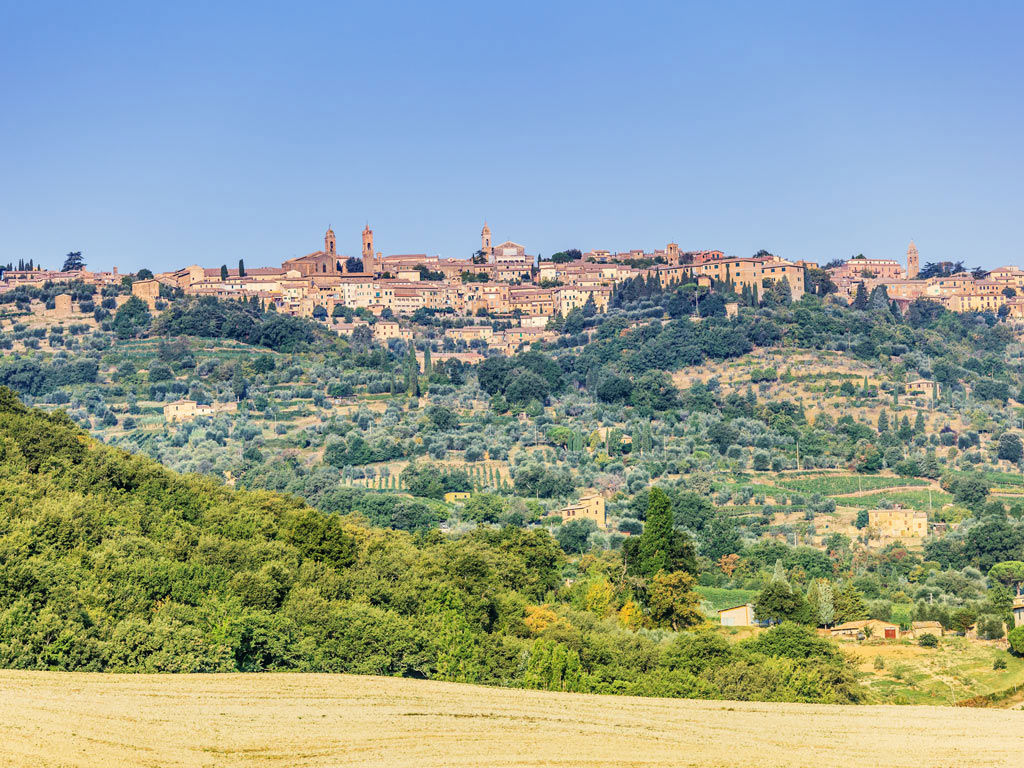Val d'Orcia
And its water
The Val d’Orcia is located along the Via Cassia, one of the most important Vie Consolari, which connects Rome to Siena, in its most beautiful stretch that goes from Montalcino to Pienza.
In this valley the common thread is water: one that moves the millstones of the mills of San Quirico d’Orcia, another one of the thermal baths of Bagni San Filippo and Bagno Vignoni and the other one that sculpted the famous badlands.
A place rich in art, history and nature a stone's throw from Cignella Resort.
Piazza Vecchietta and Bagni San Filippo
Perched on a hill on the slopes of Mount Amiata, Castiglione d’Orcia is located right in the centre of the homonymous valley and not far from the Via Cassia, one of the most famous vie Consolari, which connects Rome to Florence.
Its territory also includes the medieval centers of Rocca d'Orcia, Campiglia d'Orcia, Vivo d'Orcia, Ripa d'Orcia and Bagni San Filippo, with its famous springs which, with their natural pools and waterfalls, create a unique and evocative landscape.
In the centre of Castiglione d’Orcia, the main square, Pizza Vecchietta, is dedicated to the Sienese painter Lorenzo Di Pietro, known as il Vecchietta, because he was thought to have come from here.
The city hall overlooks the square which houses the fresco of the Sienese school Madonna con Bambino e due santi, coming from Rocca D'Orcia and in the centre of the square, paved with natural and unworked stones, there it is a well in travertine dating back to the sixteenth century.
Castiglione d’Orcia is 40 minutes from Cignella Resort.
The city of Pius II
Corsignano, today's Pienza is located along a scenic road that divides the Val di Chiana from the Val d'Orcia, not far from the consular Via Cassia, and surrounded in the typical hilly landscape that has made Tuscany world famous.
The town takes its current name from Pope Pius II, Pienza in fact means "city of Pius" to whom he was born, and which he himself wanted to rebuild in the mid-1400s, commissioning architect Bernardo Rossellino with the intention of building the ideal Renaissance city.
The perfectly preserved village was declared a UNESCO World Heritage Site in 1996.
Most of the artistic and cultural heritage can be seen in Piazza Pio II, the main square, where the most significant examples of rational urban design typical of the Italian Renaissance are headed.
The first building, very clearly visible, is the Cathedral opposite is the Palazzo Comunale and next to it are Palazzo Borgia and Palazzo Piccolomini.
Finally, near the historic center are a Romitorio, a complex of rooms carved out of the rock by the hermit monks, and a cave in which is preserved the statue of the Madonna with six fingers, linked to the miracle of St. John Damascene as evidence of the monks' relationship with the Orthodox religion.
Pienza is less than 20 km from Trequanda and is easily reached in about 20 minutes by car.
The city of Wine
Montalcino, thanks to the Brunello wine, famous all over the world, is perhaps one of the best known towns in the Crete Senesi area.
The municipal territory, the largest in the province of Siena, is characterized by a succession of hills almost entirely covered with vineyards, and in particular with Sangiovese grapes, which according to the rules of a strict disciplinary, give life to one of the best Italian wines, the Brunello di Montalcino.
Its strategic position, which overlooks the Orcia river and the ancient Via Francigena, a very important area already in the Etruscan and Roman times, have made it acquire the structure of a military city, with a large fortress on the top of the hill and a perimeter structure with large defensive walls and towers.
The fortress is just one of the numerous buildings of great architectural interest, which together the numerous churches, such as the abbey of Sant'Antimo, the Madonna del Soccorso or the Pieve di San Michele Arcangelo, attract tourists throughout the vast municipal area.
In the heart of the historic centre, among cobbled streets, alleys and little squares, it is also possible to visit the Palazzo dei Priori and the cathedral dedicated to the Santissimo Salvatore.
Finally, you cannot visit this town without a stop in a wine bar or in one of the many wineries in the area, where you can discover and taste the many facets of local wines and buy a few bottles to make a precious gift to friends or take the memory of your holiday with you.



